 Walt Fritz, PT
Walt has been a Myofascial Release practitioner since 1992 and has been teaching since 1995. His Foundations in Myofascial Release Seminars are presented in small group settings with highly individualized one-on-one attention. Join him for a "New Perspective" on Myofascial Release.
|
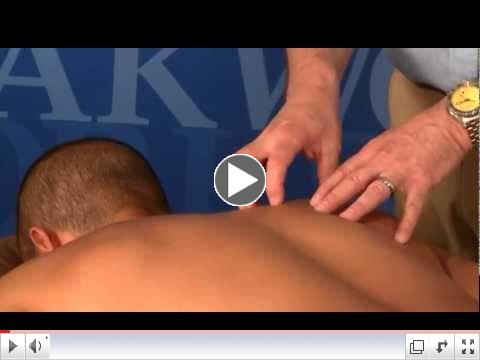 | | Leveling the Landscape of the Thorax |
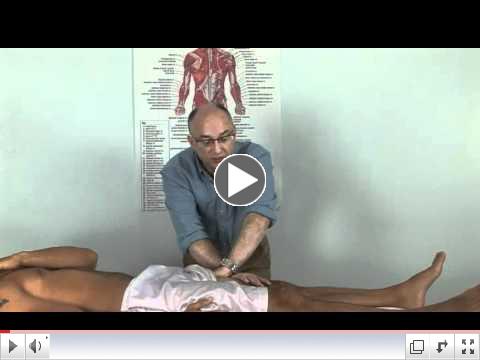 | | Myomobilization with Myofascial Release for the Thigh |
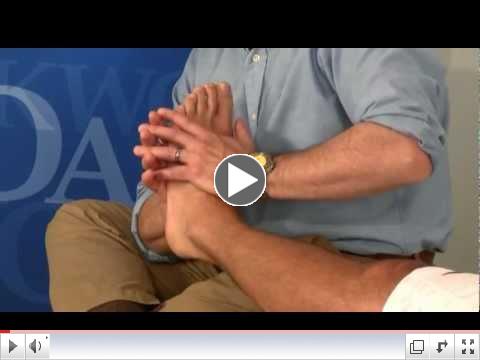 | | Compressive Myofascial Release for the Foot |
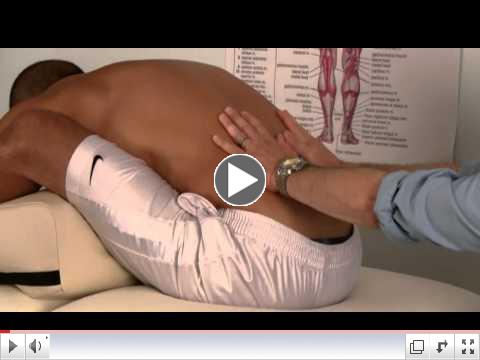 | | Lumbar Lift |
|
|
|
 |
What's New?Early Bird Registration Deadlines
There are a few approaching deadline dates for early registration discounts for a number of Foundations in Myofascial Release Seminars across the country. Please check it out at the website.
Notes on Winged Scapula and Asymmetry
True winging of the scapula is a rare condition that results form paralysis of the long thoracic nerve or damage to the serratus anterior muscle. But the observation of winged scapula is a regular part of many physical therapy assessments and treatment plans. Viewed as a larger problem of postural weakness, it becomes the focus of treatment. Also, many therapists see what appears to be scapular winging, or other skeletal asymmetries, and believe that this asymmetry is the "cause'" of pain and dysfunction. As many, many PTs, and other health professionals, come from a so-called "weakness model" of pain, they will prescribe exercise as a means to reduce pain. I do realize that my niche physical therapy/myofascial release private practice receives a rather skewed community of referrals, as I tend to see those whom traditional therapeutic approaches (physical therapy, massage therapy, chiropractic, injections, medications, surgery, etc.) have not been effective.
If weakness is the underlying issue, ask yourself "does weakness hurt?". The answer should be "never", unless a weak muscle is worked to full fatigue (rare). So why does the therapeutic community prescribe strengthening as a means to address pain? Studies have shown that movement has a positive effect on pain conditions, so exercise does satisfy this need. But it is the movement component that creates the change, not the fact that the person is stronger. The approach that myofascial release, and other fine manual therapies, follows is to address the tightness that may be interfering with pain-free movement. Reduce or remove the tightness and pain is no longer a problem.
Physical therapy, including the larger medical model, often observe a winged scapula and other postural asymmetries and see a problem, one that must be "fixed". These are only a few of many areas that traditional physical therapy gets it wrong, in my opinion.
Research shows us that in one study (1 and 2), 98.4% of us have a lateral spinal curve, or a scoliosis. Rib deformity is an unavoidable result of any rotatory changes (scoliosis) in the spinal column. The first diagram shown below demonstrates how the posterior thorax will change with the presence of scoliosis. Note the rib hump on the right hand side. The diagram below shows the typical progression of deformity as the spine rotates. Notice how the rib cage develops a posterior hump on one side. If there was no spinal rotation and scoliosis present, the rib cage would be equal on both sides and the scapula would ride on top of the rib cage in a symmetrical fashion. But with rib deformities, the scapulas are forced into different positions. The second diagram shows a potential scenario for scapular placement when scoliosis is present. Due the forced migration of the right scapular to a new position, the right side will appear winged. It is the underlying landscape that has been altered and it has NOTHING to do with weakness.
Another aspect of scoliosis to think about is the client who complains that no matter how much chest region strengthening they do, one side of the pectoral region remains much smaller in relation to the opposite side. Rib asymmetry, which most of us have to some degree, will force one side of the anterior chest wall to appear less developed. In most cases, exercise will never "even things out".
Are we, as manual and myofascial release therapists, able to reduce or correct skeletal asymmetries? I believe we can, to some extent. I have had the experience of working with clients over the course of a number of years who have had documented improvement in the scoliosis via X-rays. These were not strictly controlled case studies and I am fully aware that other factors could have played a role. There is one published case study, which I am aware, that documents a positive improvement in scoliosis via myofascial release:
http://www.lebauerpt.com/uploads/1/3/9/4/1394925/jbmt_-_mfr_scoliosis_published_final.pdf
The upshot of this article is that postural asymmetry is not abnormal, in most cases. 98.4% will have such asymmetries. Expand your search, do not be misled.

http://www.patient.co.uk/health/Scoliosis-%28Curvature-of-the-Spine%29.htm
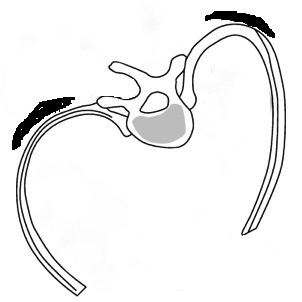
an adaptation of: http://www.rad.washington.edu/academics/academic-sections/msk/teaching-materials/online- musculoskeletal-radiology-book/scoliosis
Copyright Walt Fritz, PT and Foundations in Myofascial Release Seminars 2013.
Cheers,
Walt Fritz, PT
|
|
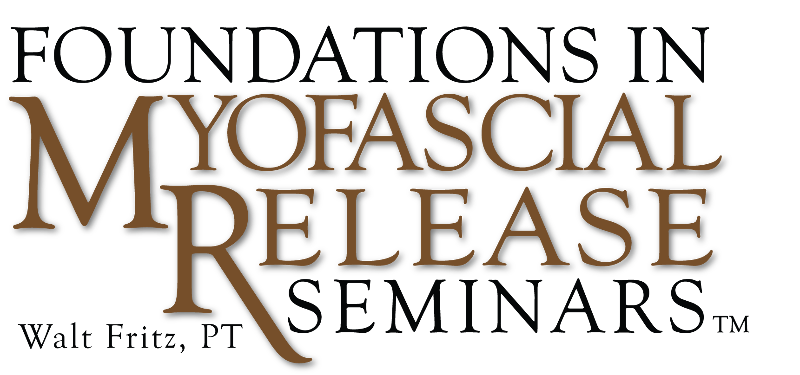
Upcoming Seminars
Myofascial Release...Demystified
Foundations I Long Beach, CA: World Massage Festival
August 5-7, 2013 Queen Mary
Syracuse, New YorkSeptember 13-15, 2013 Sponsored by: The Onondaga School of Therapeutic Massage/Syracuse CampusCharlotte (Cornelius), North Carolina
September 27-29, 2013 Sponsored by: NC Massage School Redding, California
November 7-9, 2013 Sponsored by: The Complete Retreat 448 Redclif Dr. 100 Redding, CA 96001 530-949-3930 Foundations II(NO prerequisite required)
Lafayette, Indiana
August 23-25, 2013 St. Simons Island, GeorgiaOctober 11-13, 2013 Sponsored by: A Balancing ActRochester, NY
Split days in October and November, 2013 A very few seats remain for this very small group private training. Contact us for details All Foundation in Myofascial Release Seminars (except for the Foundations in Myofascial Release for the Treatment of Dysphagia and Voice Disorder Seminar) are 20 contact hours/over two and one-half days and it are packed with techniques, theory, and practical application. Building upon a deep model of evaluation, you will leave this seminar ready to use Myofascial Release on your first day back to work. Developing the "Feel" for soft tissue restriction and connecting this to your patient's pain is an essential element missing in other lines of MFR education. Foundations Seminars delves into learning the "Feel", making you a more effective therapist. NCBTMB CE hours continuing education credits are approved. Physical Therapy CE Hours are available in many circumstances, as well as CE Hours for other professions available; please inquire. For full details and to register, please refer to the Seminars Page of the website. You have many options when it comes to continuing education training. Myofascial Release is a powerful modality for eliminating pain and restoring function, but how do you choose? Foundations Seminars draw strongly Walt Fritz's background as a physical therapist, as well as a Myofascial Release practitioner. He has been a New York State Licensed Physical Therapist since 1985 and has been practicing Myofascial Release since 1992. He spent 10 years teaching nationally with other well-regarded practitioners and started his own seminars in 2005. Foundations in Myofascial Release Seminars delve deeply into the evaluation of soft tissue dysfunction from both a more traditional fascia perspective as well as looking at pain through the lens of neuroscience. Through deep evaluation you will explore postural and movement pattern disorders. Treatment then proceeds in a logical manner. It is important to know your strengths as both a therapist and teacher. Walt's strengths lie in his ability to effectively connect his students with the "Feel" of soft tissue restriction and its elimination. Using a gentle approach, he eliminates the need for aggressive work, which is hard on both the patient as well as the therapist. He has taken the work he was taught and moved in a direction of logic and simplicity, without the heavy trappings of New Age teachings. Learning is an ongoing process for all of us, and Foundations Seminars follows this trend. We review all relevant explanations for pain and dysfunction, from the more traditional models of "fascial restriction" to newer models based on scientifically accepted pain theory. Neuromodulatory treatment is introduced along side myofascial release. The overlap is at times quite amazing! All Foundations Seminars attend to the individual needs and background of all participants. The intended audience includes massage therapists, physical therapists, occupational therapists, speech and language pathologists, nurses, chiropractors, and physicians. Instruction is in a very approachable and interactive style. Small class size guarantees individualized one on one attention. The incorporation of a deep model of evaluative understanding regarding the nature of dysfunction within the body aids in connecting the theory of Myofascial Release to the application of treatment. You will leave Foundations I Seminar prepared to use Myofascial Release from your first day back at work. Walt makes himself available for follow up consultation as needed, so you never feel alone in this process. Foundations Seminars are packed with technique, theory, and evaluation. There is considerable lab time where you will get plenty of one-on-one instruction, assuring you to have a positive learning experience. Foundations in Myofascial Release Seminars provide explanations for the workings of myofascial release from both the bio mechanical model, as well as introducing neurobiological explanations. Foundations in Myofascial Release Seminars emphasize a solid orthopedic basis for evaluation and treatment, small group trainings, and a high degree of one-on-one interaction; does this sound like what you are seeking? Myofascial Release...Demystified. I have found myofascial release to be the most effective method for both finding the causes of pain, as well as eliminating them. My goal is to pass this along to you. Walt Fritz, PT | |
What is the Deal With the
Frozen Chicken?
Using analogy can be an effective means of teaching a new concept. Since I started my Foundations in Myofascial Release Seminars in 2006, I have moved in a direction that makes my teaching style unique. To me, myofascial release was always about connection; connection with the tissue in distress. For a few decades I believed that when I found tightness in the body I was finding fascial restriction, as that was what I was taught. But with a bit of knowledge under my belt, I am reasonably sure that what we are effecting is much more than just fascia, if fascia plays any key role, other than supportive, at all. I know the nervous system drives what we do with our hands.
Whether it is the nervous system, fascial system, or muscular system, little of this matters if the therapist has no way to connect with the patient's pain and dysfunction. Over the past ten years it has become more obvious to me what draws me toward a client's pain while evaluating and treating. What I care about is a simple feedback loop that has simplified my approach. When we touch our patient, we are looking for a sign of their pain or dysfunction. My most reliable sign is a very characteristic tightness, that can take a wide variety of forms. To help therapists learning my approach, I've come up with the following very simple analogy.
Imagine that you take a frozen chicken breast out of the freezer and set it on the counter to thaw. You return in an hour or so (I know...not supposed to do this, but this is only an analogy!) to check its status, and you touch the meat, allowing your fingers or hand to sink in a bit to check to see how things are progressing. You work your way through the outer, thawed layers, but encounter that central area that is still frozen. It feels quite different that the thawed part, as it is dense and stiff. This is what happens when I reach into the body. This is what I describe as tissue in distress.
There are a lot of very effective modalities out there with some very fine teachers; I know, I have learned from many of them. All have their manner of connecting you with dysfunction. I just think most modalities stress the elaborate process of learning and mastering more than they stress the feel of what should be taught. If everyone told you how simple manual therapy really can be, there would be little market for all of these teachers and their modalities. Many of you have heard my take on myofascial release and manual therapy and know that I believe many of the explanatory models that are taught today to be complete rubbish. Even more of you know how I have come to admire folks in various fields who are not afraid to poke holes in the great sacred cows of our therapy world. The ones I admire most are those who are not afraid to say something like "when I put my hands on a person and move in this way, they seem to get better". Admitting what oen does NOT know is admirable, instead of using false facts and pseudoscience to weave a semi believable tale of explanation. Since most of the science used to explain the work we do makes less sense than this statement, why not be honest and say the truth?
Tissue in distress is the term I use to describe how the body reacts to injury, trauma, or surgery. I believe it is primarily a function of the nervous system, rather than the fascia being the primary culprit. As ischemia or injury effects the nerves, it seems that a characteristic density or tightness envelops the area, creating pain or other dysfunction. This is the felt-sense that I seek out when evaluating and treating and this is the frozen chicken that I send my students in search of. Once the therapist finds the frozen chicken, I ask them to narrow their focus on the chicken, snagging it, so that both they and their client are in connection with it. Then, the therapists asks for feedback from the client, determining if this tissue is part of the pain/problem. If the client affirms the sensation, the therapist stays in contact with the snagged frozen chicken until they note a change in tone of the area. As the chicken thaws, so to speak, the normal effect is a lessening or the pain or dysfunction. The therapist continues to seek out the frozen chicken until the area feels clear and loose. Simplistically, we are engaging the nerve and its surrounding tissue in distress and creating a sensory feedback to the brain, which in turn signals the effected area to change its tone, reducing tightness/pain. While not an explanation to satisfy a neuroscientist, it meets my needs while treating.
By using the frozen chicken analogy, I in no manner mean to disrespect or bring humor to a patient's condition, or to try to overly simplify the true problem. It simply refers to the felt-sense that a therapist seeks out when evaluating for soft tissue dysfunction and seems to be an effective teaching tool, based on the feedback. Try it yourself; can you find your client's frozen chicken and make a change?
Cheers,
Walt Fritz, PT
|
|
If you enjoy the MFRmail Newsletter, please forward to a friend.
It makes no sense to keep this to yourself... | |
 |
Check out the Visible Body App for the iPad and other devices. One of my favorite anatomy guides and it is fully interactive. Just click the Visible Body symbol above to read all about it.
|
|
Sponsoring a Foundations in Myofascial Release Seminar
Foundations Seminars are dedicated to providing quality small group setting continuing education workshops. Using a sponsorship model has brought seminars to smaller cities that are typically skipped by the larger companies. If you have an interest in bringing a Foundations Seminar to your town, I would love to talk. Seminar sponsoring brings attention to your practice and allows you to build a reputation in your community. Also, you will share a percentage of the registration fees and attend the seminar for free. If you would like more information, refer to this page of the website, then email me or call at 585-244-6180. | |
|